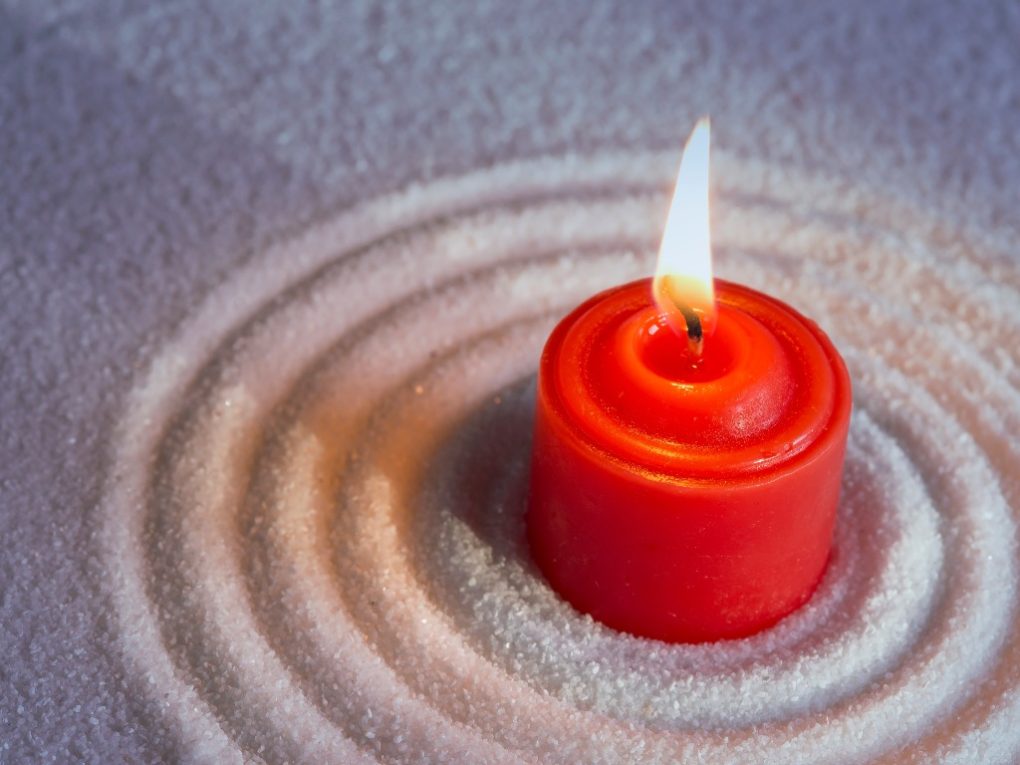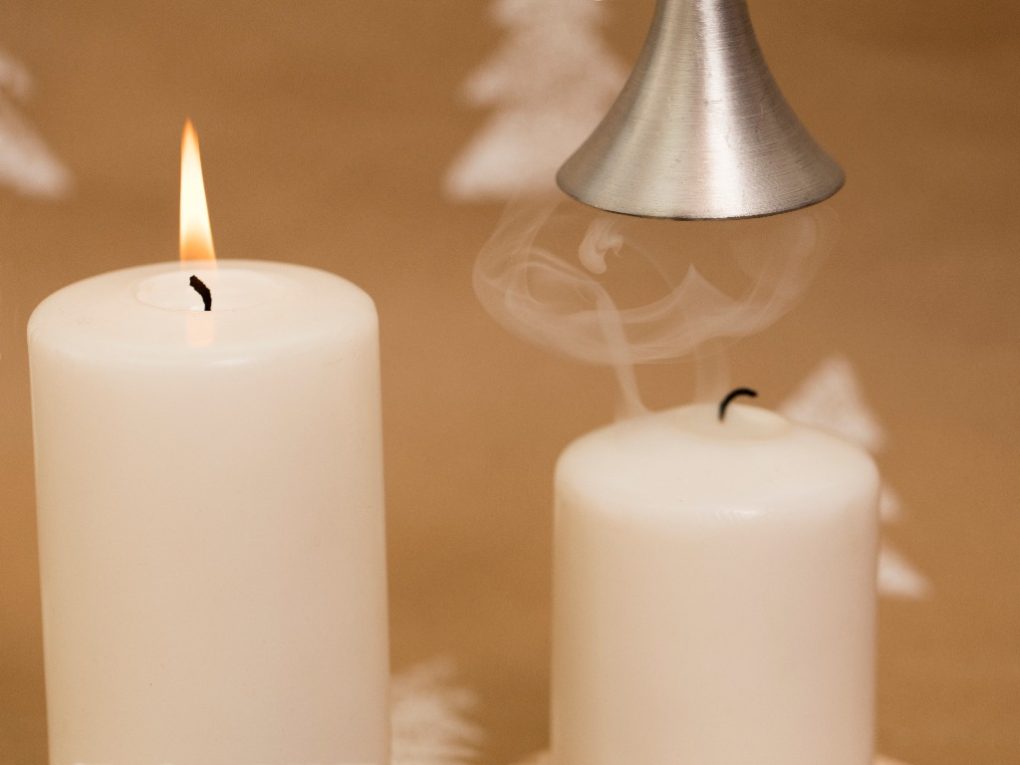Does Candle Wax Evaporate: The Science Behind Candle Burning
Yes, candle wax can evaporate over time due to sublimation. Sublimation is when a solid material is converted directly into a gas without going through a liquid phase. When a candle is burned, the heat from the flame melts the wax near the wick, which then travels up the wick and is vaporized by the flame’s heat. This vaporized wax is what we see as the flame of the candle.


Even when a candle is not burning, its wax can slowly evaporate over time due to sublimation. The wax is a relatively volatile substance, meaning it can easily transition from a solid to a gas.
Factors That Affect Candle Wax Evaporation
Temperature
Temperature is one of the most important factors that affect candle wax evaporation. Higher temperatures will cause the wax to evaporate more quickly, while lower temperatures will slow the evaporation process.
When the temperature is high, the molecules in the wax become more energetic and move faster, which causes them to break away from the surface of the wax and enter the surrounding air. This process is called vaporization or evaporation. The higher the temperature, the more energetic the molecules become, and the more quickly the wax will evaporate.
On the other hand, when the temperature is low, the molecules in the wax have less energy and move more slowly. This makes it harder for them to break away from the surface of the wax and enter the surrounding air. As a result, the rate of evaporation slows down.
Humidity
Humidity is another factor that can affect the evaporation rate of candle wax. Humidity refers to the amount of moisture in the air, according to the National Weather Service. It can significantly impact how quickly or slowly candle wax evaporates.
When the air is dry, and the humidity is low, the wax will evaporate more quickly because there is less moisture in the air to prevent the wax molecules from breaking away from the surface of the wax and entering the surrounding air.
On the other hand, when the air is humid, and the humidity is high, the wax will evaporate more slowly. This is because the moisture in the air makes it more difficult for the wax molecules to break away from the surface of the wax and evaporate into the surrounding air.
Airflow
Airflow is another factor that can affect the evaporation rate of candle wax. For example, a breeze or a draft in the room can cause the wax to evaporate more quickly.
This is because the airflow helps to carry the wax molecules away from the candle’s surface and into the surrounding air. As a result, the rate of evaporation is increased. On the other hand, when there is no airflow in the room, the wax may evaporate more slowly. This is because the wax molecules are not being carried away from the candle’s surface as quickly, so the evaporation rate is slower.
Surface Area
A candle’s surface area can also affect its wax’s evaporation rate. The larger the surface area of the wax, the more quickly it will evaporate. For example, a candle with a wide diameter will have a larger surface area than a candle with a narrow diameter, even if they are the same height. This means the wider candle will evaporate its wax more quickly than the narrower one.
Similarly, a candle with a rough or textured surface will have a larger surface area than a smooth one. This means the rough candle will evaporate its wax more quickly than the smooth candle.
Type of Wax
The type of wax used in a candle can also affect its evaporation rate. Different types of wax have different melting points, densities, and chemical compositions, impacting how quickly the wax evaporates.


For example, paraffin wax is a common type of candle wax known for its relatively low melting point and easy workability. However, paraffin wax candles tend to evaporate more quickly than others, making them a good choice for shorter burn times or use in warmer environments.
On the other hand, soy wax and beeswax are two candle wax types known for their slower evaporation rates. Soy wax is a natural wax made from soybean oil, and it tends to burn more slowly and cleanly than paraffin wax. Beeswax is another natural wax known for its long burn time and pleasant honey scent.
Presence of Additives
The presence of additives in candle wax can also affect its evaporation rate. For example, additives are substances added to the wax during manufacturing to modify its properties, such as improving scent throw, enhancing color, or increasing burn time.
Some common additives used in candle wax include fragrance oils, colorants, and UV stabilizers. These additives can affect how quickly the wax evaporates by altering its chemical composition or surface properties.
For example, fragrance oils can make the wax more porous or hydrophilic, increasing the evaporation rate. Similarly, colorants or UV stabilizers can affect how much sunlight or heat the wax absorbs, which can also impact its evaporation rate.
Age of the Wax
The age of the wax can also affect its evaporation rate. Over time, wax can become dry and brittle, making it more prone to cracking or flaking off. This can lead to faster evaporation rates as the wax becomes more porous and susceptible to moisture loss.
In addition, old wax may also lose some of its scent or color, which can impact the overall quality of the candle. This is particularly true for candles stored in direct sunlight or exposed to high temperatures, as these conditions can accelerate the aging process and cause the wax to degrade more quickly.
Tips to Prevent Candle Wax Evaporation
Proper Candle Storage
Based on experience, one way to prevent candle wax evaporation is to store your candles properly. Keep them away from direct sunlight and heat sources, as these can cause the wax to soften and evaporate faster. Store candles in a cool, dry place like a closet or pantry. If you have a large collection of candles, consider investing in a storage container specifically designed for candles.
Trimming the Wick
Another way to prevent candle wax evaporation is to trim the wick before each use. A long wick can cause the candle to burn too hot, which can cause the wax to evaporate faster. Use a wick trimmer or scissors to trim the wick to 1/4 inch before lighting the candle. This will help the candle burn at the right temperature and reduce the amount of wax that evaporates.
Using a Candle Snuffer


When it’s time to extinguish your candle, avoid blowing it out, as this can cause the wax to splatter and evaporate faster. Instead, use a candle snuffer to extinguish the flame gently. This will help the wax cool down slowly and reduce the amount of wax that evaporates.
By following these simple tips, you can help prevent candle wax evaporation and extend the life of your candles. Remember always to practice safe candle use and never leave a burning candle unattended.
